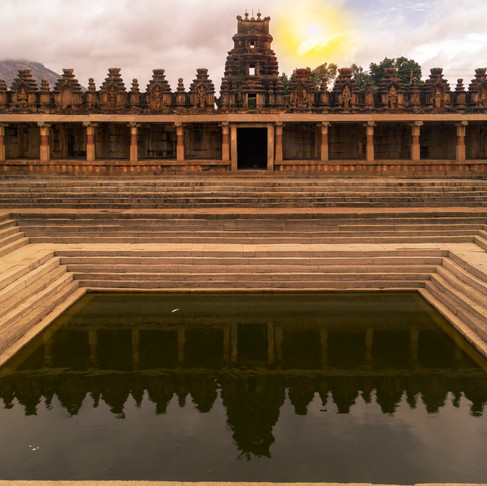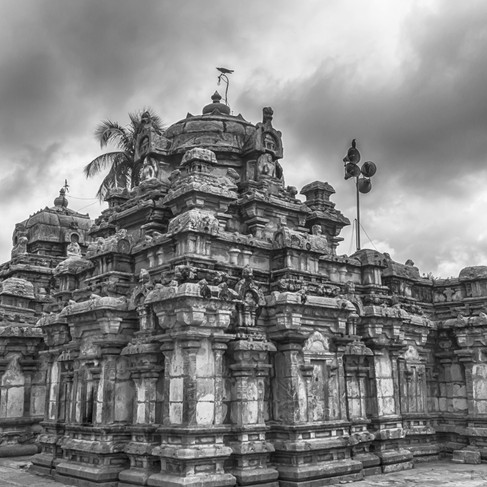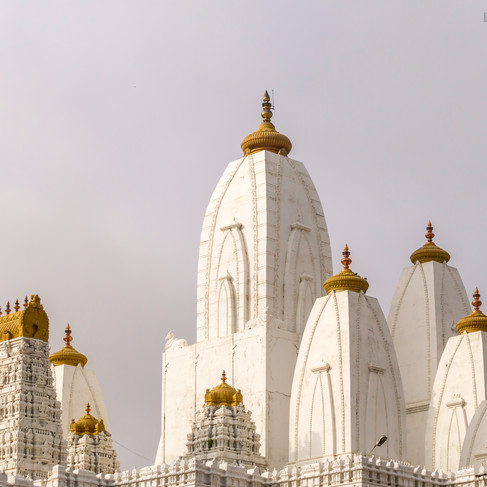Temples Of Bangalore Part - I
- Rahul Singi
- Jun 25, 2016
- 3 min read
This is the self assignment to explore the temples of Bangalore, so here are few temples and there background story. Some more comming soon
1. Bhoga Nandeeshwara Temple: The original temple in the complex, identified as one of the oldest temples of Karnataka, dates back to the early 9th century. The earliest inscriptions referring to the construction of the temple for Shiva. The temple complex has two large shrines: the "Arunachaleswara" shrine to the south built by the Gangas of Talakad, and the "Bhoga Nandeeshwara" shrine to the north built by the Cholas. According to the art historian George Michell, the temple is a typical 9th-10th century Nolamba construction with pilasters on the outer walls of the shrines, perforated decorative stone windows which contain figures, of a dancing Shiva (south wall of the Arunachaleshwara shrine) and Durga standing on a buffalo head (north wall of Bhoga Nandeshwara shrine). Pyramidal and tiered towers (shikhara) rise from the two major shrines. The "Arunachaleswara" and the "Bhoga Nandeeshwara" forms of Shiva represent, according to Hindu legend, two stages in the life of the god Shiva: childhood and youth. The "Uma-Maheshwara" shrine has reliefs depicting the third stage, Shiva's marriage to the goddess Parvati. Hence this shrine is popular with newly weds who come to seek blessing.
2. Pancha Linga Nageshwara Temple: The Nageshvara temple complex (also spelt Nagesvara and called Naganatheshvara locally) is located in Begur, a small town within the Bangalore urban district of Karnataka state, India. From inscriptions, it is known that Begur was once called Veppur, and Kelele (in Western Ganga King Durvinita's Mollahalli grant inscription of 580-625 C.E.). Two shrines within the temple complex, the Nageshvara and Nageshvarasvami were commissioned during the rule of Western Ganga Dynasty Kings Nitimarga I (also called Ereganga Neetimarga, r. 843-870) and Ereyappa Nitimarga II (also called Ereganga Neetimarga II, r. 907-921). The remaining shrines are considered a later day legacy of the rule of the Chola Dynasty over the region. An Old Kannada inscription, dated c. 890, that describes a "Bengaluru war" (modern Bangalore city) was discovered in this temple complex by the epigraphist R. Narasimhachar. The inscription is recorded in "Epigraphia Carnatica". This is the earliest evidence of the existence of a place called Bengaluru
3. Dwadasha Jyotirlinga Temple: Sri Dwadasha Jyotirlinga Temple is located in Bangalore, in the state of Karnataka, India. The temple is located in Omkar Ashram, in Omkar Hills Bangalore. Omkar Hills in Srinivasapura is one of the highest points of Bangalore. The Sri Dwadasha Jyotirlinga Devasthana is unique, and one of the most magnificent and gigantic temples in Karnataka. Inside the main temple, the 12 Jyotirlingas are seen along with Sri Vidyaganapathi, Sri Subrahmanya, Sri Kalabhairava, Sri Chandikeshwara, Ekadasha (11) Rudradevatas, Panchaloha Nataraja weighing around 1000 kg and the Divine Mother Shakti in the form of Sri Yantra. It has biggest clock tower in India. It is bigger than the reputed Big Ben Clock tower in London, This Tower clock is installed by HMT. At the commencement of every hour, the clock chimes the sound of couch (Shankanada) followed by “Om” five times. This can be heard hear fro far away distance. Height of the clock tower is 40ft. Weight of the clock is 500kgs. Hour hands and minute hands weighs around 40kgs.
4. Shree Parshwa Sushil Dham, Jain Temple: Its a Jain temple complex about 20 kms from Bangalore on NH7 (Hosur Road) – newly built, it is built in white marble and leaves you impressed with its beautiful carvings. In addition to Bhagwan Parshwanath, the main hall of the temple has statues of various Jain deities.









































留言